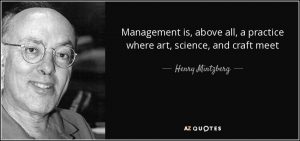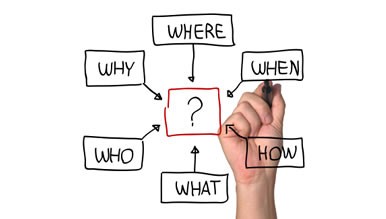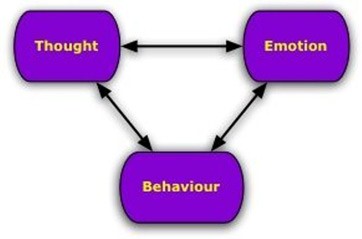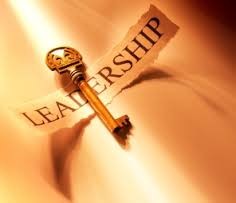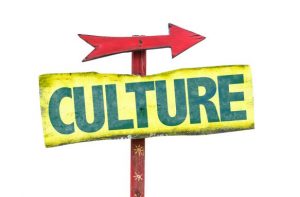The Ten Schools of Thoughts by Henry Mintzeberg
A school of thought refers to intellectual tradition collectively drawn by a group of people who share common characteristics of opinion or outlook of a philosophy, discipline, belief, social movement, economics, culture, or art. In strategic management the Ten Schools of Thought model by Henry Mintzeberg is a framework that can be used to categorize the field of Strategic Management. Henry Mintzberg is an internationally acclaimed academician and author on business and management. The model describes each school in strategic perspective and provides a critical viewpoint, thus, it acts as a very good overview to the entire field of Strategic Management. While academicians and consultants focus on narrow perspectives of strategies, the business managers are able to see the larger picture. One fact about strategies is they fail when they are seen very narrowly.
The Design School: The design school proposes a model of strategy making: it looks at strategy formation as a process of conception. It is a fit between internal capabilities and external potentials. Strategy formulation is a deliberate process of conscious thought. The CEO is the key strategist who develops the strategy and controls its execution. Strategies become successful when process of strategy formulation is kept simple and formal. Formulated strategies should be clear and the plan must be kept simple. The strategy design process is complete once a strategy is formulated. Strategies can only be implemented once they are fully formulated. The design school is laid the foundation of strategic planning. Strategy formulation as a deliberate, conscious process and stating the need for both external and internal analysis.
The Critical View of Design School: It assesses strengths and weaknesses bypassing the learning. Structure follows strategy, which makes strategy explicit. This promotes inflexibility. Under design schools thought formulation of strategy gets separated from implementation of strategy which detaches thinking from acting.
The Planning School: Here, strategy formation is considered a formal process. Also, the thought process runs towards planning the entire strategy in a rigorous manner, so that the firm advances forward. The complete process and the plan which the company implements is documented from the start to finish. In short the strategy planning is treated as distinctive processes. In planning school thought of strategy the plan is given more importance whenever the management wants to take new decisions. With the plan in hand, the management gets a clear direction to move ahead, helping the company to move forward steadily.
The Critical View of Planning Schools: Criticality arises when something happens out of plan. This typically happens when plans are made years in advance, and changes takes place either in the industry or in the organization. When an internal or external variable changes, then the complete plan gets affected. Hence, proper prediction is most essential when using the planning school of thought.
The Positioning school: Here the entire focus is on strategy content. The management of firms decide that they want to position the product at the top of the mind and make decisions accordingly. In this case firms need to determine the competition already present in the market, and how the firm is positioned. Here the Five Force Model, Value chain and BCG matrix are few strategic tools which can be used under the positioning school. Once the market is analyzed, the right strategy can be applied to improve the positioning of firm’s product.
The Critical View of Positioning School: in the positioning school of thought, the strategy assumes that the market will remain as it is, and it does not take into consideration new entrants or change in business environment. Like the planning strategy, the positioning school of thought can also fail if there are major changes in the business environment.
The Entrepreneurial School: This school of thought considers strategy formation as visionary process. The entrepreneurial school focuses on the CEO’s vision as the key determinant of strategy. The leader has particular perspective, a sense of long-term direction, a vision of the organization’s future. The process of strategy formation occurs in a rather unconscious way. It is deep rooted in the experience of the leader. The leader promotes the vision by maintaining close personal control of the implementation in order to be able to reformulate specific aspects as and when necessary. The organization responds to leader’s directives. The best examples Entrepreneurial school are examples in small businesses which want to make it large, or even large corporations which trust their leaders such as Apple Inc employees trusted Steve jobs, and the trust enjoyed by Mark Zuckerberg from his employees is explicit. The entrepreneurial school organizations follow whatever the CEO says. Leadership pipeline models and situational leadership model are best tools to keep searching for good leadership in organizations.
The Critical View of Entrepreneurial School: The problem with this management school of thought is only one question: Where to find a mature, experienced, talented and honest leader? If organization designs its strategies based on the recommendations by the leader of the company, the leader has to be a visionary and the one who takes responsibilities of success as well as failure of strategies.
The cognitive school: Under this school of thought, organizations give lot of importance to people’s perception and their behavior. One of the best examples of cognitive studies is the Johari window. Wherein, organizations can do better business by understanding of their employees, suppliers and customers. Customer’s perceptions matter and therefore, their information processing should be given a thought. This is where corporate communication plays an important role. Once the organization knows what their customers demand and want sending the right signals becomes easy for them. Even Howard-Sheth buyer behavior model is a good example of the cognitive school of thought. It attempts to explain the rationality of choice of the product by the consumer under conditions of incomplete information and reduced processing capability. It analyses the external symptoms of behavior, reactions and thought processes that cannot be subject to direct observation.
The Critical View of Cognitive School: The problem with the cognitive model is that it is not practical beyond a certain point. A top company cannot rely on surveys and marketing research reports alone to find new ideas or to make connections with their customers. Fact is that every day some new product get introduced in the market and keeping a tab on each movement in market is not possible in the cognitive school of thought.
The Learning school: Organizations which follow this thought process, depend a lot on their experiences and market happenings. The complex and unpredictable nature of business environment, coupled with a decentralized distribution of knowledge inside the organization, rules out deliberate control. Organizations following learning school model make strategies looking at the past; not necessarily their own past. They take cues from strategies in market which became successful or failed. Organizations following this school of thought look at things that worked in market and try to implement the same thing over time with the assumption that it will work again. Such organizations discard strategies that dint work for others.
The Critical View of Learning School: More than a strategy, the learning school of thought looks like steering or guiding the company on the basis of the previous road maps that have gone by. It is not advisable to depend on decisions of past because change is constant in the market. This strategy can be used when the firm is stable, and wants to work on auto mode while it develops something else in the meantime.
The power school: This school of thought is power centered. The people who are in power take the decisions. The power centers can be customers, suppliers, worker’s unions or leaders in the organization. The power school views designing strategy as a political process for negotiating, forming alliances and promoting one’s own interests. Strategy formation is shaped by using power and politics. Anyone who is known to have power over the company drives the company forward. The power center ensures that there is lesser resistance for implementing the strategy. Macro power sees strategy making as the interplay of stakeholders through persuasion, bargaining, negotiating and at times with direct confrontation. Power school revolves around political games and shifting coalitions.
Politics are a system of influence can act in a Darwinian way to ensure that the strongest members of an organization are brought into positions of leadership. Politics can ensure that all sides of an issue are fully debated, whereas the other systems of influence may promote only one.
The Critical View of Learning School: The problem with the power school happens when the powerful people stop listening to feedback from others and stop implementing measures of improvement, and only focus on minor improvements. At such times, the power needs to change hands so that the company keeps moving forward.
The Cultural school: The cultural school of thought says that human capital is most important in organizations. A positive culture in the firm harnesses innovations and entrepreneurial culture in organizations. Under the cultural school, strategy formation becomes subject to a company’s unique values and subjective perspectives and styles of decision-making. Strategy formation is a process of social interaction which is based on the beliefs and understandings shared by the members of an organization. An individual acquires these beliefs through a process of socialization within the organization. Strategy takes the form of perspective, rooted in collective intentions and which is reflected in the patterns by which the embedded resources or capabilities of the organization are protected and used for competitive advantage. The cultural school believes in involving as many departments possible within a company. This becomes very useful during mergers and acquisitions. Cultural school organizations emphasizes the role of social values, beliefs and culture in decision making.
The Critical View of Cultural School: Especially during any changes taking place in organization, people resist it because they get used to a typical culture. Politics in organizations plays an important role. It is difficult to unite people in organizations, there are several groups with variety of ideologies. To get the people in organization united, herculean efforts are required and direction remains unclear. Because culture and especially ideology do not encourage strategic change; they tend to promote shifts in position within the organization’s overall strategic perspective. But, this is the only school of thought which introduces a collectivist dimension of social process in strategy formation.
The Environmental school: The environmental school of thought is more of situationally related. The environmental school gives most importance to the environment. For example in Information Technology industry expertise of people matters and the knowledge of people needs regular up gradation. When expert knowledge become scares, the strategy formulation needs a change on the basis of available expertise of people. Under the given dimension, environment plays a major role. Therefore, situational analysis is the most used tool in the environmental school. Obviously, this thought process depends on the situation, and is used when there is total dependence on environmental factors.
The Critical View of Environmental School: Under this school of thought, process entirely depends on the environment which constantly changes. It is difficult for organizations to keep changing their strategies constantly.
The Configuration school: One of the most preferred amongst the 10 School of thoughts is the configuration school because the basic premise in this is that the strategy needs to be configured. The strategy allows the firm to move from one position to another, hence simple set of values will not help this movement. As per the configuration school, strategy needs to consider a lot of facts and cannot be derived from simple statistical data and values. The configuration school attempts to find a combination of all aspects of the nine other strategy schools. An organization stands on the basis of a stable configuration of its characteristics.
Strategy adopts a particular structure which matches to a particular type of context. Organizations undergo cycles of stable phases, disturbed phases and transitional phases. The key to strategic management is to sustain stability or at least adapt strategic change, while periodically recognizing the need for transformation and being able to manage the troublesome process of transformation effectively. The process of strategy making can be one of conceptual designing or formal planning, systematic analysis or leadership visioning, cooperative learning or competitive politicking, focusing on individual cognition, collective socialization, or simple response to the forces of the environment. Each of these must be found at its own time and in its own context. The resulting strategies take the form of plans or patterns, positions or perspectives, or else ploys, but again, whether a deliberate or an emergent strategy configuration is applied by the organization depends on its unique context in which it finds itself.
The Critical View of Configuration School: This school of thought tries to attain stability via various ways, and keeps transforming as long as needed. The configuration school partially resolves the conflict between emergent and deliberate strategy schools by incorporating both aspects of strategy formation. The Emergent strategy is formed from within the organization during periods of stability. Deliberate strategy is formed by management and consultants during periods of transition. It states that deliberate and emergent strategy both have their thoughts and ideas which at times are conflicting. The configuration school is criticized as being too rigid in its distinction between phases of stability and transition phases.













































